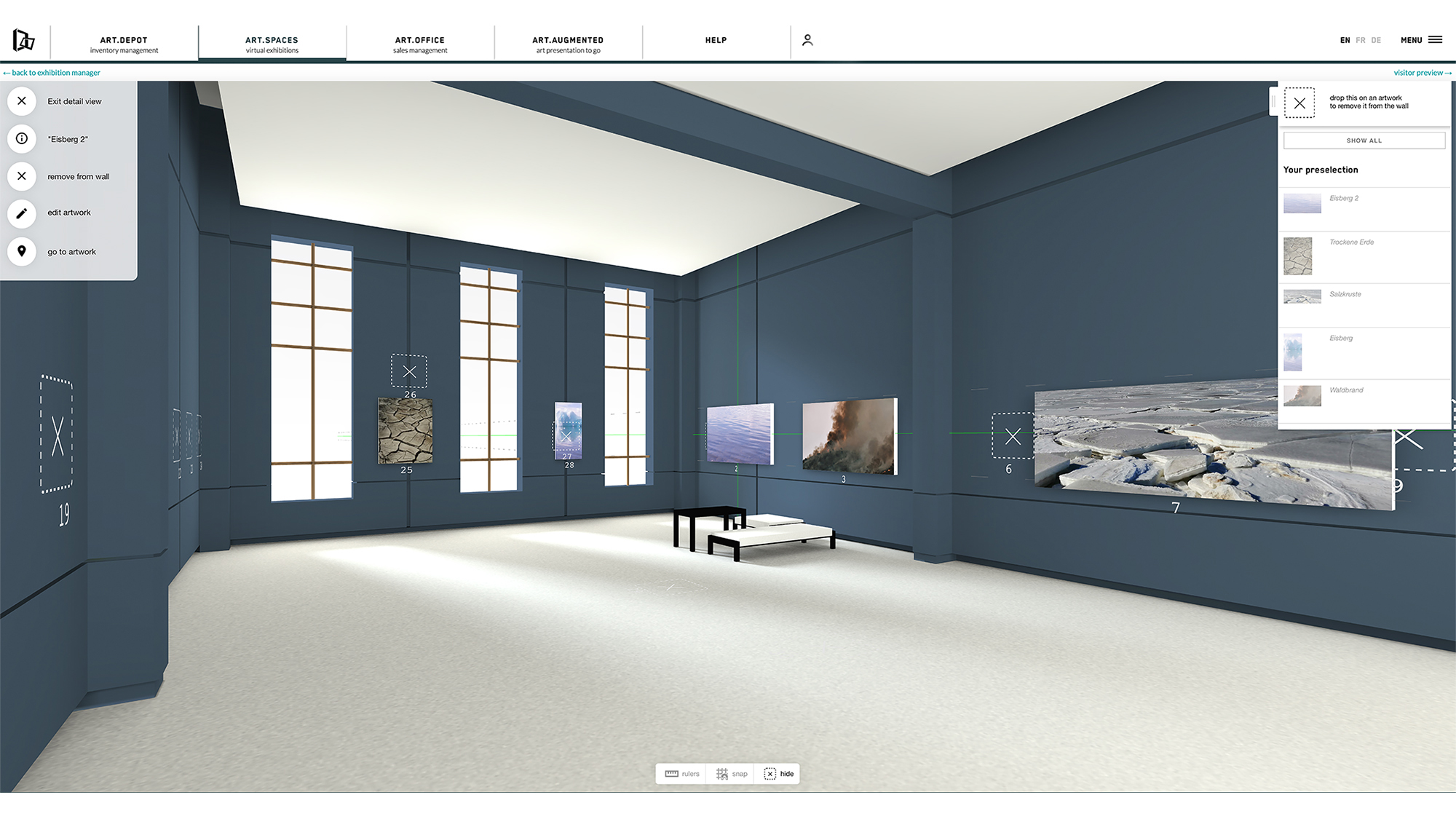
Your first exhibition
Your first exhibitionas a journey through the histories of art and climate
The students curate their own exhibition within the given subject of the climate crisis using the ART.SPACES web app by Kunstmatrix. Work takes place in small groups to be able to cover several perspectives on the thematic complex as well as the many work steps in the context of curating exhibitions. Online image archives make it possible to select diverse artworks from the entire art history that can be thematically linked to the climate crisis. This may also entail new perspectives on individual works. In the students’ online exhibition space, works of the art historical canon can be placed next to their own artistic works.
Description
This project was conceived during the Covid-19 pandemic, when galleries and museums were closed and artworks could not be experienced in their original form. Many museums around the world attempted to bridge this period by providing digital and online formats, such as video tours, in-depth analyses of individual artworks, and behind-the-scenes looks at the institution. In addition, the importance of online archives such as prometheus or Google Arts & Culture, which ensure access to artworks on the Internet, became even more apparent.
Preoccupation with nature, animals, plants, forests, water, glaciers, but also with heat or natural disasters runs like a thread through all canonized periods of art. In contemporary art, it is often represented in the form of a critique of global climate politics, discrimination and capitalism and in works that deal with natural resources. The fact that artworks from different art historical periods deal with the same images over and over again and thereby recontextualize the motifs was demonstrated, for example, by a 2019 exhibition at the Certosa di San Martino Museum in Naples, which showed the eruption of Mount Vesuvius as a recurring motif in the art canon, in various periods over time. Can something similar be accomplished regarding the climate crisis – an exhibition on the subject of the climate crisis, with artworks from all periods and genres? What kind of view on this contemporary issue may a journey through art history open up? Which thematic restrictions should be made to set priorities in the wide field of “climate crisis”?
These are the questions this project aims to explore, with the results of the art-historical research being made accessible in an online exhibition using the ART.SPACES web app by Kunstmatrix. In addition, the artworks selected from the online archives can be complemented with the students’ artworks created in art class or in their spare time (sketches, drawings, paintings, photographs, etc.). In this way, questions concerning the art canon can be raised playfully. Students thereby put themselves and their work in relation to contemporary and historical art. Additionally, they learn about online archives and how to use them, as well as how to examine the power relations that archives reproduce. In art class, exhibiting and curating are often neglected as topics in their own right. In the project Your first exhibition as a journey through the histories of art and climate, students learn to put artworks into a joint context, thus gaining their first curatorial experience. The students make decisions and selections and draft exhibition texts to create a coherent framework for their respective exhibition – in short, they curate.
Tasks and specific work steps
- Input on the subject of “curating”
- Teamwork research: research the climate crisis and determine your specific focus
- Teamwork curating: research artworks from different art-historical periods and select them for the exhibition
- Virtual tour: give insight into the curatorial concept and describe your approach
Images/Examples

Die erste eigene Ausstellung als Zeitreise durch die Geschichte der Kunst und des Klimas © 2022 by Miriam Raggam-Alji is licensed under CC BY-SA 4.0
Additional Information
Author’s Encouragement
This assignment gives insight into the topics “archive”, “art canon” and “curating” in a playful way. Students learn to approach a topic (in this case here the climate crisis) by specifying and narrowing it down, and researching contextualizing artworks. They also have the opportunity to relate their own artworks to contemporary art.